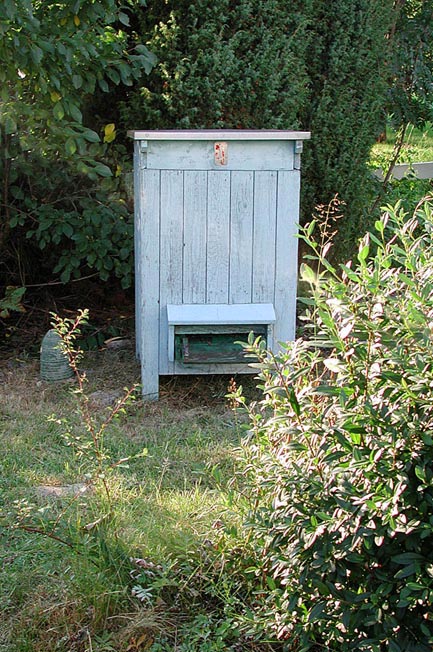.
Natural combs have more drone cells than foundation frames.
Apidologie 33 (2002) 75-86
DOI: 10.1051/apido:2001008
The effect of drone comb on a honey bee colony's production of honey Thomas D. Seeley
Department of Neurobiology and Behavior, Cornell University, Ithaca, NY 14853, USA
(Received 15 May 2001; revised 28 August 2001; accepted 16 November 2001)
Abstract
This study examined the impact on a colony's honey production of providing it with a natural amount (20%) of drone comb.
Over 3 summers, for the period mid May to late August, I measured the weight gains of 10 colonies, 5 with drone comb and 5 without it.
Colonies with drone comb gained only 25.2 +/-16.0 kg
whereas those without drone comb gained 48.8 +/- 14.8 kg.
Colonies with drone comb also had a higher mean rate of drone flights and a lower incidence of drone comb building. The lower honey yield of colonies with drone comb apparently arises, at least in part, because drone comb fosters drone rearing and the rearing and maintenance of drones is costly. I suggest that providing colonies with drone comb, as part of a program of controlling Varroa destructor without pesticides, may still be desirable since killing drone brood to kill mites may largely eliminate the negative effect of drone comb on honey yields.






